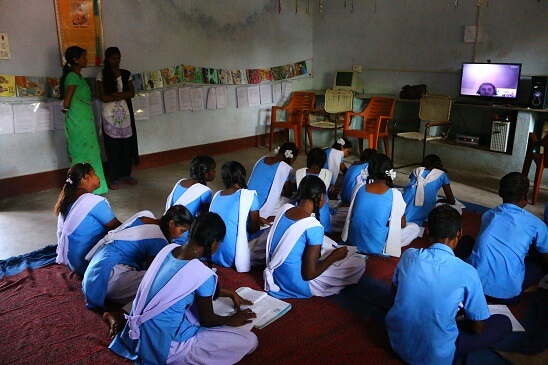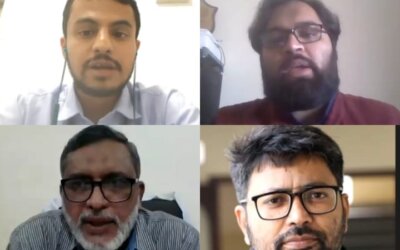With Covid-19 pandemic forcing schools and colleges to shift classes to digital platforms, Students Islamic Organisation of India (SIO) demands special allocation for building digital education infrastructure in the Union Budget 2021-22.
SIO reiterates its demand for more central government spending on education sector and employment, as many students lag behind and a large population of youth struggle to find jobs due to the pandemic and lockdown. The organisation demands that the funding for fellowships and scholarships for marginalised students, which have witnessed a decline in the last few years, be increased substantially in the next fiscal.
We are living in unprecedented times with post COVID-19 clouds looming large, adding to the larger uncertainty around the socio-economic scenario. The International Monetary Fund (IMF) has pegged contraction in India’s economy at 8 per cent in the current financial year, higher than the 7.7-per cent decline projected by the government’s advance estimates.
The union budget is expected to bring stimulus to key sectors. Education and employment are expected to be among the focus areas. With virtual education being fast-tracked, the lack of digital infrastructure is appalling and is need of a substantial investment. In the milieu of the New Education policy, the shift towards experiential learning, pedagogic transformation, infrastructure upgradation, and teacher upskilling requires substantial capital investment. Thus, this budget will be a litmus test on the government’s vision and intent on Education.
SIO has always been at the forefront of various educational initiatives, right from awareness to advocacy, covering the entire spectrum of education and youth affairs. In the upcoming budget, the organisation has great expectations in some of the key areas concerning students and youth.
Overall Spending on Education
In 2019-20, India allocated Rs 6.43 lakh crore ($88 billion) of public funds for education, per the Economic Survey. Of this, the central government allocated Rs 56,537 crore ($7.74 billion) to school education–60%–and Rs 38,317 crore ($5.25 billion) to higher education. Put together, the Centre accounts for 15% of education spending. The rest came from the states and Union Territories. This proportion needs to be substantially increased. There is also need from center to spend in areas other than administrative.
While spending on education has increased in absolute terms since 2014-15, it has remained stagnant at around 10.5% of the total government budget and has only increased from 2.8% of GDP in 2014-15 to 3.1% in 2019-20. It should be increased to 6%, as has been underlined by a consensus of experts.
Special emphasis on digital platforms
Education infrastructure is another important segment on which the Union Budget should focus on. The pandemic forced over 1.5 million schools across India to close overnight, making it mandatory for the sector to adopt the digital platform.
Although in the post-pandemic ecosystem, digital education has been embraced, India still needs to build capabilities to support blended learning completely. Therefore, educational infrastructure lending is a necessity to aid the development of educational institutions across the country.
Scholarships and Fellowships
Research scholars in India avail various fellowships including PMRF, UGC JRF, CSIR JRF, MANF, National Fellowship for OBC students and National Fellowship for Scheduled Caste students. There are attempts to make education more exclusive with continuous attack on tools of scholarship and fellowships. The merit-cum-means as well as national pre- and post-metric scholarship for SC/ST, OBC and minorities, fund allocation to be increased.
In spite of the increase in demand for scholarships, the budgetary allocation for all three schemes has not increased significantly. The allocation in 2019-20 has actually declined in comparison to last year’s budget estimates or revised estimates.
Employment
India’s unemployment rate rose sharply to 9.1 per cent in December 2020, highest since the beginning of India’s recovery from the lockdown in June, the Centre for Monitoring Indian Economy (CMIE) said on Monday. Unemployment rate stood at 10.99 per cent in June 2020. The Skill India programme, where more than 3000 crore rupees was allocated has failed to bear the desired results. Since the scheme’s inception, 68 lakh people have undertaken training but only 15.5 lakh managed to get placement. Thus, spending and efficacy of the program should be improved. MNREGA scheme should be substantially strengthened.
Entrepreneurship
The Rs. 945 crore Startup India Seed Fund Scheme will be operational from April 1, 2021, to 2025 as the government looks to boost the ecosystem, providing the crucial capital for young companies. This is a good step forward.
This time, government should incentivize the start-up funding and work towards relaxing the policies to encourage angel investors to invest more. Start-ups should be able to get easy loans without any interest.
At this point, it’s all about taking immediate steps for faster recovery.





0 Comments